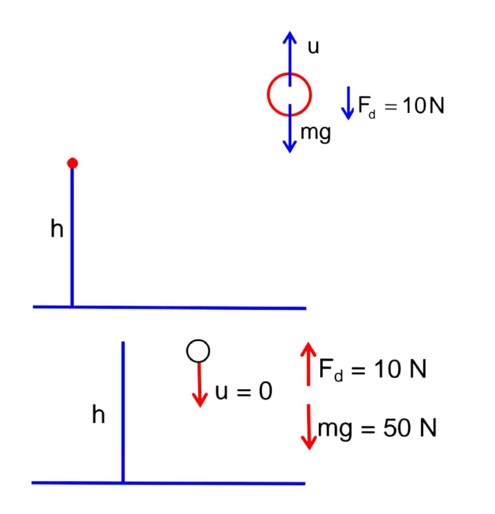Class 11th
Get insights from 8k questions on Class 11th, answered by students, alumni, and experts. You may also ask and answer any question you like about Class 11th
Follow Ask QuestionQuestions
Discussions
Active Users
Followers
New answer posted
4 months agoContributor-Level 10
NF3 is stable due to high N-F bond energy.
Other halides of nitrogen (NCl3 NBr3, Nl3) are explosive
New answer posted
4 months agoContributor-Level 10
Energy of 1 photon =
Energy of 1 mole of photon =
= 0.399 * 106 J = 399 KJ
New answer posted
4 months agoContributor-Level 10
= 10 rad/sec2
(ln 2 seconds) =
Angle rotated by wheel in 2nd second
=
= 20 – 5
= 15 rad
New answer posted
4 months agoContributor-Level 10
B2H6 has 4 2 c -2e bonds and 2 3c-2e bonds.
Bridging (B-H) bonds have more value of bond- length then terminal (B – H) bonds
Bridging bonds are in one plane, but terminal bonds are in perpendicular plane.
Due to presence of (3c-2e) bonds, it behaves as electrons deficient and prone to get attached by lewis base.
New answer posted
4 months agoContributor-Level 10
Due to higher extent of polarization by Li+ and Mg2+, LiCl and Mgcl2 have covalent character. Therefore they are soluble in ethanol.
Due to very high value of lattice energy, LiF is having very less solubility in water.
New answer posted
4 months agoContributor-Level 10

v = u + at
0 = u – 6t
(time of Ascent)
=
for time of descent
a = 4 m /sec2
New answer posted
4 months agoContributor-Level 10
The highest industrial consumption of hydrogen gas is in the synthesis of ammonia gas (Having use in manufacturing of N-based fertizers)
New answer posted
4 months agoContributor-Level 10
Number of moles of C = Number of moles of CO2 =
Number of moles of H = 2 * no. of moles of H2O =
Mass of C =
Mass of H =
New answer posted
4 months agoContributor-Level 10
Acidic oxide => Cl2O7
Neutral oxide => N2O, NO
Basic oxide => Na2O
Amphoteric oxide => As2O3
Taking an Exam? Selecting a College?
Get authentic answers from experts, students and alumni that you won't find anywhere else
Sign Up on ShikshaOn Shiksha, get access to
- 65k Colleges
- 1.2k Exams
- 679k Reviews
- 1800k Answers
